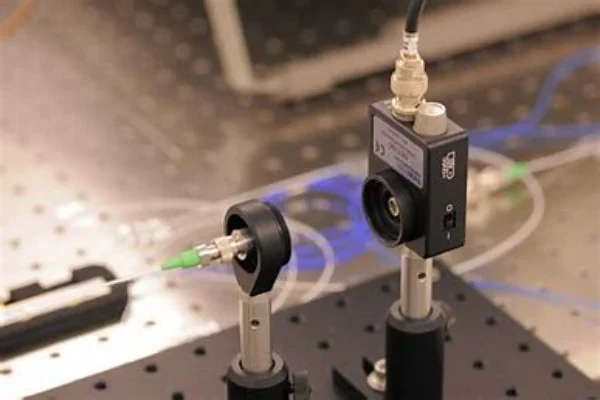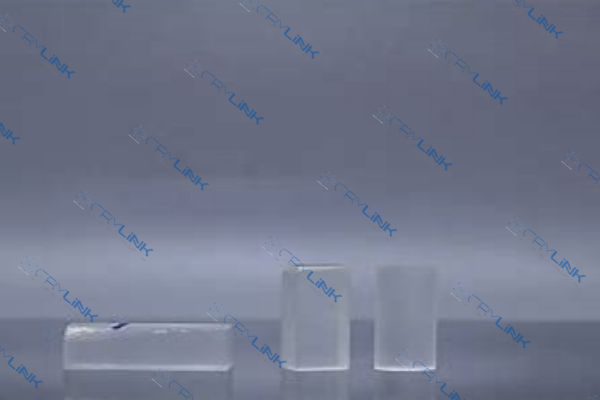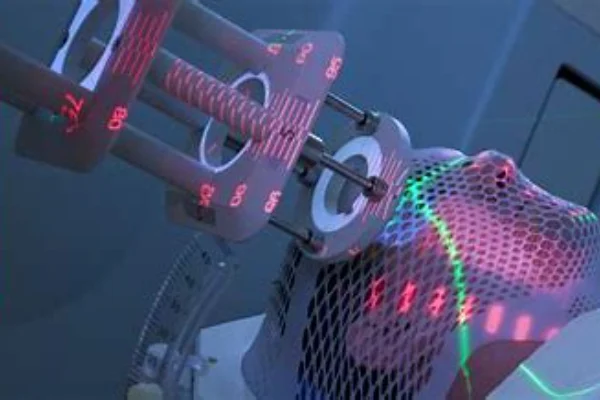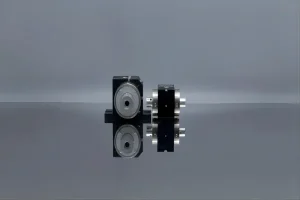Introduction
In the realm of laser technology, the role of crystal polarization is paramount. It plays a crucial role in determining the efficiency, stability, and overall performance of laser systems. This article delves deep into the intricacies of crystal polarization and its significance in laser systems.

Understanding Crystal Polarization
Polarization is a fundamental concept in optics that describes the orientation of oscillations in light waves. At its core, it pertains to the direction in which the electric field of a light wave oscillates. Every light wave consists of oscillating electric and magnetic fields that are perpendicular to each other and to the direction of the wave’s propagation. When discussing the polarization of light, it’s specifically about the orientation of the electric field.
Natural light, such as sunlight, is generally unpolarized. This means that the electric field oscillations occur in random directions perpendicular to the direction of propagation. However, certain interactions with materials or through specific devices can cause the light to become polarized. In this state, its electric field oscillates predominantly in a single direction.
The phenomenon of polarization has significant implications in various fields. For example, polarized sunglasses are designed to block horizontally polarized light, which is commonly reflected off surfaces like water or roads, thus reducing glare for the wearer.
Crystals play a pivotal role in the world of polarization. Their unique atomic structures, organized in a repeating pattern extending in all three spatial dimensions, give rise to specific optical properties that influence the behavior of light as it passes through. When light encounters a crystal, its polarization state can change due to the atomic structure of the crystal causing different orientations of the electric field to travel at varying speeds.
Furthermore, certain crystals possess properties that allow them to split an incoming light wave into two separate rays with distinct polarizations. This phenomenon, known as birefringence, results in each ray experiencing a different refractive index within the crystal. Consequently, they travel at different velocities and exit the crystal at varied angles.
The ability of crystals to influence the polarization state of light has led to their extensive use in optical devices and systems. In laser technology, for instance, specific crystals are employed to achieve desired polarization states, which can significantly impact the efficiency and output of the laser system.
In conclusion, the interplay between light and crystals is a captivating area of study. The unique atomic structures of crystals allow them to manipulate the polarization state of light, having profound implications for both fundamental science and practical applications. As the field of optics continues to evolve, the role of crystals in shaping our understanding of light and its properties remains of utmost importance.

Birefringence in Crystals
Birefringence, a term derived from the Latin words “bi” meaning two and “refringere” meaning to break, is a unique optical property observed in certain crystals. When a ray of light enters a birefringent crystal, it is split into two rays, each traveling at a different speed and with a distinct polarization direction. This splitting occurs because the crystal has two different refractive indices for the two rays, often referred to as the ordinary and extraordinary rays.
The phenomenon of birefringence is closely tied to the internal structure of the crystal. Crystals are made up of atoms and molecules arranged in a specific, repeating pattern. In birefringent crystals, this arrangement is such that it causes different orientations of the electric field of light to experience different refractive indices. As a result, the light wave is divided, with each component wave traveling at its own unique velocity.
The practical implications of birefringence are vast and varied. For instance, birefringent materials are used in optical devices like wave plates, which can alter the polarization state of light. They are also employed in stress analysis techniques, where patterns produced by birefringence can reveal stresses in transparent materials.
In the context of laser systems, birefringence takes on added significance. Lasers, by design, produce coherent light, meaning the light waves are in phase with one another. However, when a laser beam passes through a birefringent material, the two split rays can accumulate different phase delays due to their different velocities. This phase mismatch can lead to interference effects, reducing the efficiency of the laser system.
Furthermore, the two rays emerging from the birefringent crystal can diverge from one another, leading to beam divergence. This divergence can result in a decrease in the laser’s output power, as the energy of the laser beam is spread over a larger area. In high-precision applications, even slight beam divergence can lead to significant inaccuracies.
To mitigate the effects of birefringence in laser systems, careful consideration must be given to the choice of materials and the design of the optical components. Techniques such as temperature tuning or angle tuning can be employed to adjust the refractive indices of the birefringent material, ensuring optimal laser performance.

In conclusion, birefringence in crystals is a captivating optical phenomenon with profound implications in various technological applications. While it offers unique capabilities in manipulating light, it also presents challenges, especially in laser systems. A deep understanding of birefringence and its effects is crucial for harnessing its potential while mitigating its drawbacks.
Crystal Orientation and Its Significance
The world of crystals is intricate and fascinating. One of the most crucial aspects that dictate the behavior of crystals, especially in optical applications, is their orientation. The orientation of a crystal is essentially the spatial arrangement of its atoms or molecules. This arrangement is not random; instead, it follows a specific pattern that repeats itself in three-dimensional space, forming what is known as a crystal lattice.
Every crystal lattice has a unique geometry, and this geometry plays a pivotal role in determining the crystal’s physical and optical properties. For instance, the way light interacts with a crystal, including its absorption, reflection, refraction, and polarization, is heavily influenced by the crystal’s orientation. When light encounters a crystal, it interacts with the atomic or molecular structures within. Depending on the orientation of these structures, light can undergo various changes in its direction, speed, and polarization.
In the realm of laser technology, the orientation of crystals used in the system is of paramount importance. Lasers rely on the coherent emission of light waves, and any factor that can influence the phase, direction, or polarization of these waves can impact the performance of the laser. The orientation of a crystal used in a laser system can significantly affect the polarization state of the light passing through it. Polarization, in simple terms, describes the direction in which the electric field of a light wave oscillates. A crystal with a specific orientation can either maintain, alter, or even split this polarization state.
A misaligned crystal, or one that is not oriented optimally, can introduce a myriad of issues in a laser system. For starters, it can lead to phase mismatches. As different orientations can cause light waves to travel at different speeds within the crystal, the waves can go out of phase with each other, leading to destructive interference. This interference can reduce the efficiency of the laser, leading to a drop in its output power.
Additionally, a misoriented crystal can introduce beam divergence, where the laser beam spreads out instead of staying focused. In applications where precision is key, such as in medical lasers or in high-resolution imaging, beam divergence can lead to inaccurate results or even equipment damage.
To ensure optimal performance, it’s crucial to select crystals with the right orientation for a given laser application and to ensure that they are aligned correctly within the system. Advanced techniques, such as X-ray crystallography, are often used to determine the precise orientation of crystals, ensuring that they are used to their maximum potential in laser systems.
In essence, the orientation of a crystal is a fundamental aspect that can make or break the performance of optical systems, especially lasers. A deep understanding of crystal orientation and its implications is vital for anyone working in the field of optics or laser technology.

Optimizing Crystal Properties for Enhanced Laser Performance
In the intricate world of laser technology, the choice and alignment of crystals play a pivotal role in determining system performance. The selection of the appropriate crystal, tailored with the desired polarization properties, is a foundational step. It’s not just about picking a crystal; it’s about choosing one that aligns with the specific requirements of the laser system, ensuring it operates at its zenith of efficiency. But the journey doesn’t end at selection.
Once the right crystal is in hand, its orientation within the laser system becomes paramount. Proper alignment techniques are essential to sidestep potential pitfalls related to birefringence and misalignment. By marrying the right crystal choice with meticulous alignment, one can significantly bolster the performance of the laser system, achieving results that are both precise and efficient.

The Future of Crystal Polarization in Laser Systems
Advancements in crystal technology and a deeper understanding of polarization properties promise a future where laser systems are more efficient, stable, and versatile. By harnessing the power of crystal polarization, we can pave the way for groundbreaking innovations in the field of laser technology.
Conclusion
Crystal polarization properties play a pivotal role in the functioning of laser systems. By understanding the intricacies of birefringence and crystal orientation, we can optimize laser systems for maximum efficiency and performance. As we continue to explore the vast potential of crystals in laser technology, the future holds immense possibilities for innovations that can revolutionize the industry.
FAQs
- What is the primary role of crystal polarization in laser systems?
- Crystal polarization influences the orientation of oscillations in light waves, determining the efficiency and performance of laser systems.
- How does birefringence impact the efficiency of a laser?
- Birefringence can lead to phase mismatches and beam divergence, reducing the laser’s output power and overall efficiency.
- Why is crystal orientation crucial in laser systems?
- Crystal orientation determines how a crystal will interact with light. A misaligned crystal can lead to inefficiencies in a laser system.
- How can one optimize the performance of a laser system?
- By selecting the appropriate crystal with desired polarization properties and ensuring its proper alignment within the system.
- What advancements can we expect in the field of crystal polarization in the future?
- With continuous research and advancements in crystal technology, we can expect more efficient, stable, and versatile laser systems harnessing the power of crystal polarization.







